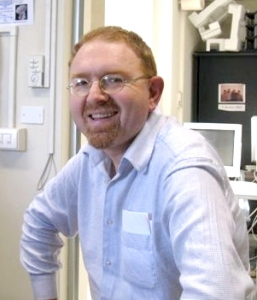When: October 22, 15.30 – 16.30
Where: Skoltech, 402
Speaker: Prof. Pierluigi Debernardi
ABSTRACT
After consolidating their dominating role in several mass applications like laser mice and datacom, vertical-cavity surface-emitting lasers (VCSELs) are becoming key components in several other fields such as smartphones 3D cameras and LiDAR systems. This fascination of the market for VCSELs is caused by their inexpensiveness, on their reliability, testability and low power consumption, which make them ideal devices for portable devices. Unfortunately, the VCSEL design is a rather complex task. In fact, most of the commercially available devices have been designed by means of extensive trial-and-error prototyping campaigns. An obvious alternative to such inefficient and expensive approaches is given by computer-aided design (CAD) techniques aimed at replacing several experimental prototyping steps with simulations, cutting down the design costs. In this presentation we introduce our in-house VCSEL Electro-opto-thermal NU-merical Simulator (VENUS) and all the main model constituents will be described and some examples of preliminary results discussed.
BIOGRAPHY
Pierluigi Debernardi was born in Casale Monferrato, Italy, in 1963. He received the degree in electronics engineering from Politecnico di Torino, Torino, Italy, in 1987 (summa cum laude). Since 1989, he has been with with IEIIT (Institute of Electronic, and Engineering of Information and Tele-communication: http://www.ieiit.cnr.it/), which has its head quarters here in Torino, and is located at Politecnico di Torino, the most famous engineering school in Italy and therefore it can benefit from many collaborations with its researchers. His research interests are in the field of the mod-eling of semiconductor materials and devices for optoelectronic applications, and especially III–V quantum wells, computing their optical response with coulomb effects included on the basis of the second quantization approach. He was involved in ridge waveguide laser simulation, analysis of optical bistable behavior of multiple quantum-well devices, and four-wave mixing in semiconductor oscillators and amplifiers. Then his research has focused on microcavity lasers, photonic bandgap structures, and, in the last 20 years, on VCSELs modelling, considering in particular their modal properties so to compute their statical, dynamical, and noise behavior. He developed a software, VELM, based on coupled mode theory, which is capable to handle any VCSEL geometry, is fully three dimensional and vectorial, and is numerically very efficient. He is the inventor of the grating VCSELs, capable of keeping a stable polarization over the whole operation range. In the last three years his research group is involved in compre-hensive VCSEL models, for which a completely in house suite has been recently implemented and is still under testing and investigations/compari-son with experimental results. He performed his activity within several European project and research contracts. He has contacts and collabora-tions with several European research institutions/universities. He is author of two book chapters, two patents, 70 papers on ISI journals, 72 confer-ence papers (15 invited).